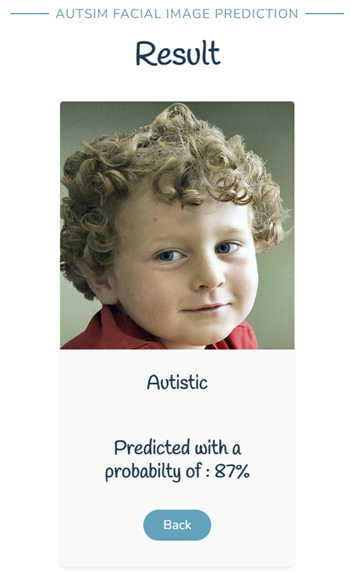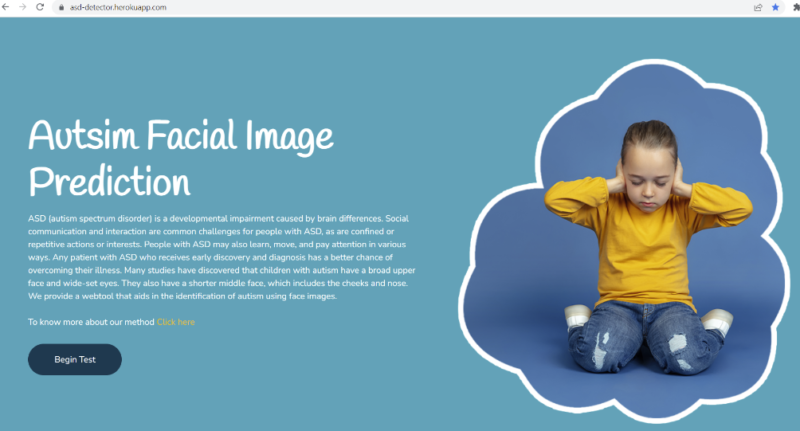Autism spectrum disorder (ASD) is caused by a difference in the brain that causes defects in brain development. People with ASD often have problems with communication, social interaction, and behavior also affects limited or repetitive interests. People with ASD may also have different ways of learning, moving, and paying attention to their surroundings. It’s not only people with ASD who have these symptoms, people who don’t have ASD also possibly experience these symptoms. However, what differentiates people who have and do not have ASD is that in people who have ASD, these symptoms can affect their lives.
Based on an article entitled “Web-based autism screening using facial images and convolutional neural networks.” The article was written by Mohamed Ikermane and Abdelkrim El Mouatasim and published in the journal Indonesian Journal of Electrical Engineering and Computer Science (IJEECS) Vol. 29 No. 2 in 2023. The author did this research because ASD screening tools such as autism diagnostic observational schedule (ADOS) and interviews Autism diagnostics (ADI) require a long time and are expensive. Because of this, the authors offer a website-based, practical, fast, and easy way of detecting ASD online. With the tools suggested, the authors can meet the urgent need for ASD screening tools. Where the results of ASD screening can be used to improve cognitive abilities, support growth and positively influence the life of a person who has ASD and his family.
According to Ikermane and El Mouatasim, using the CNN DenseNet model method whereby using this method images can be classified more accurately. Besides using CNN DenseNet, the author uses a control subgradient algorithm (CSA) optimizer to reduce loss values and increase accuracy during detection. The two methods are then combined and created in a web application-based structure. The authors use a self-made dataset divided into three parts, namely 80% training data, 15% test data, and 5% validation data. Each section has autistic and non-autistic sample data, consisting of children aged 2 to 4 years. The dataset created as an Exercise on the system can be accessed by the Kaggle Autism face pictures dataset “https://github.com/mm909/Kaggle-Autism”. The way to detect whether a child has ASD or cannot be seen is by using facial morphology. The facial morphology of an ASD child is compared to an average child. The length of the white line is longer, while the size of the black line is shorter.
The results of research conducted by Mohamed Ikermane and Abdelkrim El Mouatasim based on the CNN model method achieved a training value of 99.9. then the value of the evaluation using the CNN DenseNet method based on test data, the results achieved by the author reached a presentation of 98%. The data identified amounted to 434 facial photos. The CSA optimizer updates the weights in each iteration of each session, allowing the model to learn quickly so that after ten sessions, the loss value gradually decreases, and the accuracy is much better.

The workings of the ASD detection website created by Mohamed Ikermane and Abdelkrim El Mouatasim are as follows:
- Users upload photos that will be detected in the application with a maximum age limit of 14 years.
- Then, the uploaded photos will be sent to the application server.
- On the server, the photo is detected using image pre-processing and then detected by ASD image prediction.
- After that, the image is classified using the CNN DenseNet model on the server.
- Classification of uploaded photos determines whether the child has autistic symptoms or not based on facial characteristics.
- After the image is classified, it will generate the possibilities of the photo.
- The possible results and classifications are displayed on the website results page.
- Users can view uploaded photos with the additional probability of the photo classification on the results page.
By: Dwi Ilham JR
Source:
- GitHub – mm909/Kaggle-Autism: Detecting Autism Spectrum Disorder in Children With Computer Vision – Adapting facial recognition models to detect Autism Spectrum Disorder
- Signs and Symptoms of Autism Spectrum Disorders | CDC
- Web-based autism screening using facial images and convolutional neural network | Ikermane | Indonesian Journal of Electrical Engineering and Computer Science (iaescore.com)

